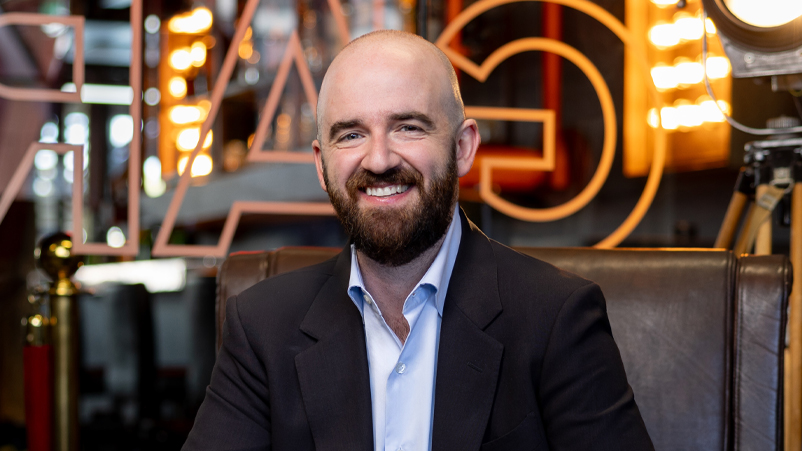In a budget-squeezed market, memory is your best investment

If doing more with less is now the marketing default, it’s time to embrace it in advertising, says Atomic 212° CEO Rory Heffernan. Say less, more clearly and land message and brand where it matters most – because simplicity is now strategic.
A bold airport encounter
Last week as I rushed through Sydney Airport's Terminal 3, a billboard caught my eye, not with flashy graphics, a clever or tailored message, but with sheer simplicity. A large brand logo, set against its signature colour, stretched across several metres of wall space. No product shots, no call to action, just the brand. And yet, it stopped me in my tracks.
Now, I know I'm not your average passerby when it comes to noticing ads; I work in this business and I wasn't even in-market for the product category in question. However, I was struck by how simply the execution activated what decades of consistent brand investment had already lodged in my mental filing cabinet. Despite the fact I was in a semi-panicked jog to Gate 9, where “Go to gate” had morphed into “Final Call”, my brain filled in the blanks in a flash.
In today's attention economy, where space and attention are fiercely contested – and where effectiveness guidelines are now well documented (not least in that excellent System1 and JCDecaux study covered by Mi3) – this ad worked because of what it didn't show. That’s the power of brand memory. And in an era of flatlining marketing budgets, it’s an asset that is more valuable than ever.
More with less? Try saying less, more clearly
Last week’s release of Gartner’s 2025 CMO Spend Survey paints a sobering picture: across the US, UK and Europe, marketing budgets remain static at 7 per cent of company revenue, following multiple years of decline. The language CMOs are using to describe their response – “efficiency”, “AI”, “optimisation”, “ROI” – won’t surprise anyone. With inflationary pressure (especially on platforms) squeezing margins, marketers are rightly doubling down on working media and leaning on technology and automation to trim everything else.

So, if “doing more with less” is no longer just a mantra but the default operating mode, perhaps it’s time to embrace another principle: simplicity. Not only are marketers under pressure to maximise every dollar, they’re also competing for something even scarcer: attention. And in a data-saturated, hyper-personalised, ever-fragmenting media landscape, cutting through is only half the battle. Being remembered is the real prize.
That brings us back to associative memory. Research has shown that associative memory – the mechanism by which we connect a brand to a category, need state, or context – declines faster than item memory (Yang et al., Learn Mem., 2016). Advertising isn’t about the message alone; it’s about making the brand memorable in context. Distinctive brand assets are our shortcut to that kind of recall. Yet many brands, in a bid to evolve and “stay fresh”, are overextending; deploying too many assets across too many touchpoints and diluting their effectiveness.
Step-loading to success
The smarter move? Step-loading. Embed one or two distinctive assets first. Reinforce them relentlessly. Then build associations into new products, audiences or moments. In today’s fractured media ecosystem, depth beats breadth every time.
It’s understandable, even tempting, to cast a wide net, to attach your brand to every trend, channel, or micro-moment in the hope that something sticks. But the more contexts you chase, the more you risk blurring the mental associations that make brands sticky in the first place.
That brings me back to that big logo and bold brand colour. Was there a well-thought-out creative and media strategy behind it? Was there research that backed the logo to deliver on years of hard-earned brand association? I’d love to think so. Because in today’s complex, budget-constrained, attention-starved landscape, simplicity isn’t just aesthetic, it’s strategic.
The brands that thrive won’t be the ones that run the most campaigns or have the most variations. They will be the ones that build meaning over time and know that when the moment comes, familiar cues can do the heavy lifting. If you’ve laid the groundwork, a logo is more than enough.
